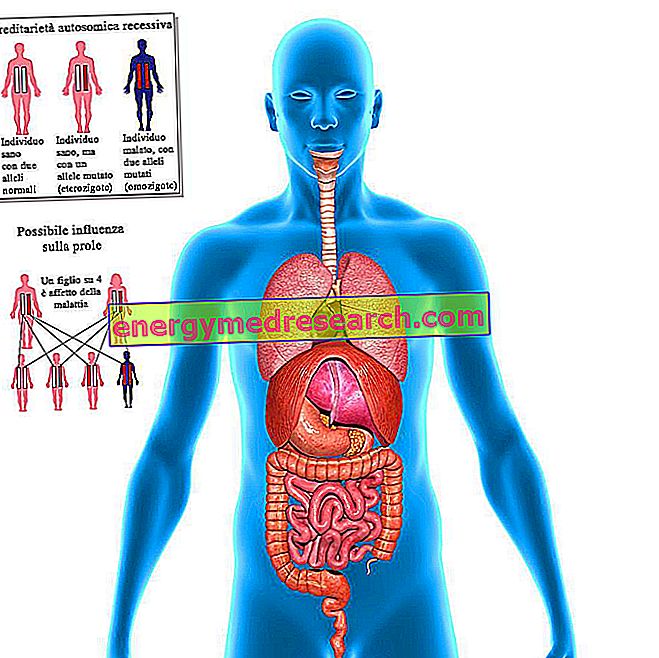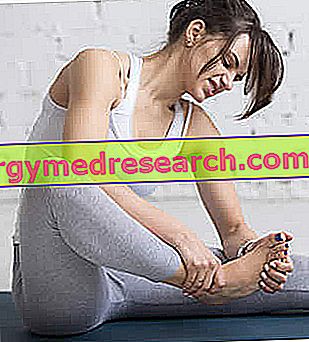Introduction
Hair massage is a technique that can bring many benefits, which seem to have been known already in ancient times. It is said, in fact, that Julius Caesar, intolerant for his own baldness, in addition to masking it with carryovers, liked to have his head massaged with nettle and chilli lotions, to try to counteract hair loss.

The scientific rationale for this treatment lies in the hypothesis that baldness also recognizes an ischemic etiology. According to this theory, hair loss would be the expression of a poor flow of blood into the scalp, with little vascularization of the "roots" (bulb and dermal papilla).
Benefits
As mentioned, the hair massage could be an aid to hinder baldness.
Massaging the hair, especially with the aid of rubefaction lotions, in fact, helps to stimulate the blood circulation of the epicranial skin by increasing the quantity of oxygen and nutrients available to the bulbs. Hence the usefulness of massage therapy against hair loss.
Another important aspect is that hair massage can promote and improve the penetration of active substances applied before and / or after the massage itself. Finally, the massage makes the galea capitis more elastic.
Although the ischemic aetiology of baldness has long since been reduced, if not completely excluded, from scientific work, empirical experience suggests that scalp massage can be effective in slowing down hair loss in an important way. In this sense, it is fundamental to support lotions suitable for one's type of scalp (dry, greasy or fortified).
In summary, the main benefits of hair massage are:
- Improve and reactivate the microcirculation at the scalp level.
- Promote the penetration of active substances and nutrients applied before, after or during the same massage.
- It can counteract the dryness of the scalp, as it stimulates the production of sebum (an element that, under normal conditions, exerts a protective action on the scalp itself).
- Promote relaxation and consequently reduce accumulated stress (in fact, individuals with hectic and very stressful lifestyles seem to be more predisposed to hair loss).
Important recommendations
In the case of incipient, marked, sudden baldness or in any case a source of personal discomfort, it is advisable to refer your case to a dermatologist skilled in hair care (trichology). Hoping to stop a fall on a hormonal basis or to regrow hair through simple scalp massages is somewhat optimistic. In this sense, the DIY remedies risk losing only time and other hair. Today there are effective pharmacological solutions for all types of alopecia (drugs such as finasteride and minoxidil in androgenetic alopecia - TOS in menopausal women - Corticosteroids, Photodynamic therapy and Laser in alopecia areata). In the final analysis it is also possible to resort to hair transplantation.
Massage Technique
In general, the massage technique involves tapping the entire scalp with the fingertips, then massaging in a circular direction with the fingertips, performing more or less energetic frictions. Pressure, duration and rhythm of the massage should be adjusted according to the condition of the hair: if they are healthy and strong the massage can be energetic (but not excessively), while if they are weak and easy to fall the pressure will be lighter and vibratory.
Usually, it is advisable to carry out the massage of the hair from the lower part of the head towards the upper part and not the other way around.
Generally, it is recommended to massage the hair two or three times a week for 5-10 minutes. Surrendering to excessive enthusiasm for this technique, excessively massaging the scalp, can induce an increase in sebum production by the latter (a deleterious aspect of hair health), thus leading to counterproductive results. Therefore, in people with greasy hair, the massage should neither be too vigorous nor excessively prolonged over time.
Important, according to some, is also the technique of "detachment" of the scalp, performed by trying, with the help of the fingertips, to detach the scalp from the underlying bone; this practice is reinforced by the so-called facial gymnastics, through which an attempt is made to stimulate the recruitment of the fur muscles used for motility of the scalp.
Finally, some prefer to practice hair massage not with their hands, but with the help of natural bristle brushes. This massage is performed by placing the brush on top of the head and then moving it with gentle movements towards the forehead, the temples and the base of the neck.
There are also various types of electric massagers available on the market, specifically designed to perform hair massages.
Products
Which products can be used for Hair Massage?
There are many products with which it is possible to do hair massages. It passes, in fact, from simple products, such as olive oil and argan oil, up to the real hair oils formulated with different active and nutritive substances.
Furthermore, the hair massage can also be performed with detergents or shampoos during normal washing.
Finally, there is certainly no lack of phytotherapeutic and natural products or lotions deriving from folk medicine that will be discussed in the following chapter.
Popular Medicine
In light of what has been said so far we can say that the scalp massage is one of the oldest treatments to give strength and vigor to the hair, delaying its fall. Equally ancient is the search for the most suitable natural remedy for this purpose, to be applied to the hair during the massage to favor its absorption.
Long before the advent of minoxidil, folk medicine has selected a long list of alleged anti-fall remedies, also borrowed from modern trichology (which uses them mainly in the form of suitably diluted essential oils). Also in this case the search for the most suitable remedy depends on the characteristics of the patient and his hair. For example, the treatment of a person with alopecia areata will be completely different from that suitable for a male with androgenetic alopecia or a woman during menopause.
However, among the natural ingredients most used by folk medicine to combat hair loss, nettle and maidenhair fever certainly stand out.
The decoction of nettle roots can be considered the natural remedy par excellence for androgenetic hair loss; modern phytotherapy has in fact confirmed that nettle roots have an anti-androgenic activity, blocking the enzyme converting testosterone into didrotestosterone (the latter being heavily implicated in the progressive miniaturization of hair follicles, followed by hair loss).
The other natural ingredient greatly exploited by folk medicine is maidenhair, a medicinal plant often found in recipes for natural lotions against hair loss. At the same time, in the past, folk medicine foresaw the use of maidenhair fern to revive the color of dark hair. However, at present there is no confirmation of the alleged anti-fall properties ascribed to this plant.
DIY Lotions

Below are some recipes for the preparation of do-it-yourself lotions (taken from traditional medicine) which involve the use of the aforementioned nettle plants and maidenhair ferns.
Do-it-yourself nettle lotion
A popular recipe suggests using 300 grams of nettle roots harvested in autumn, 15 grams of rosemary (useful against impure skin and oily hair) and 20 grams of peppers. The mixture is boiled for about ten minutes in a solution consisting of one liter of water and 400 grams of vinegar, filtered and left to cool. With the solution obtained, wash the hair by rubbing it before going to bed and rinse with water the next day.
A variation on the previous recipe suggests using 150 g of nettle (roots), 20 grams of chili pepper (fruits) and 20 grams of romasrino (leaves). Slowly boil the drugs for about twenty minutes in half a liter of vinegar. After this period let it rest for 30 minutes and filter. Wash the hair with the solution by rubbing it before going to bed and rinse with water the next day.
Maidenhair lotion
Many are maid based lotions designed and exploited by folk medicine to combat baldness.
One of these involves placing 100 grams of maidenhair (aerial parts) in boiling water; keep boiling for about ten minutes, then cover and let stand for five minutes. Strain, allow to cool and use for the final rinsing of the hair with a scalp massage. This remedy is indicated to eliminate dandruff and curb hair loss.



